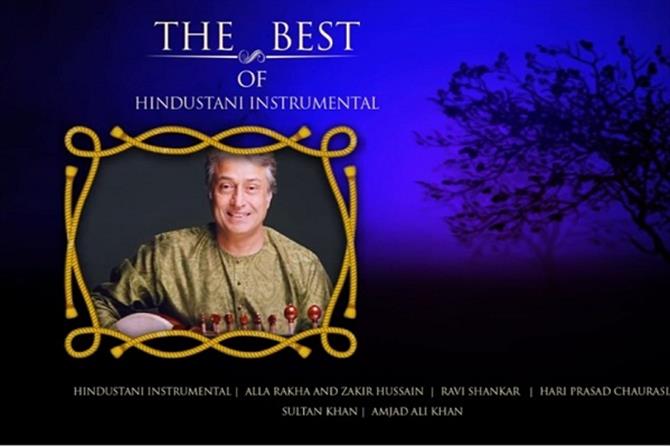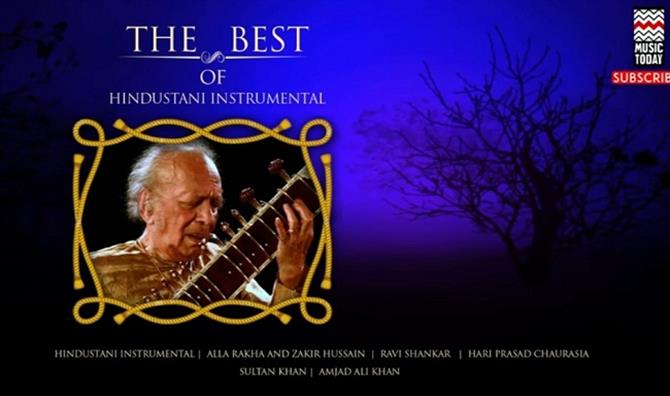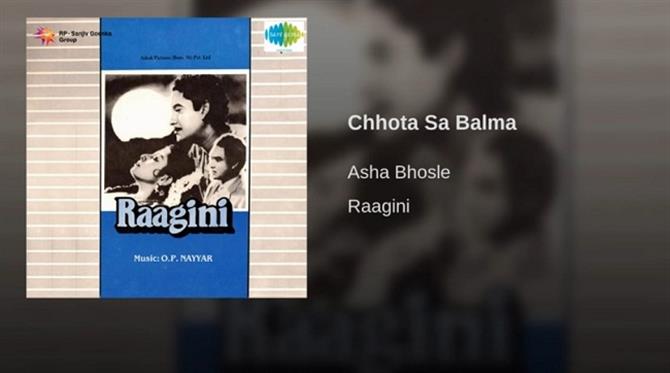Raga is a crest jewel in the world of melody, each raga offering possibilities for endless exploration with their limited melodic material.
A gentleman who discovered classical music late in his life told me that when he first heard Raga Durga he loved it so much that he went on to buy as many recordings of musicians performing Raga Durga as he could find. “And, do you know,” he told me with wonder, “they all sound so different! I could not have known they were performances of the same raga, except that the labels say so.”
What kind of perception is involved in identifying raga-s? It is not like identifying a song. It is not like identifying a Mozart piece. The kind of memory involved in these tasks and that in identifying a raga are different, the latter demanding many layers of memory and interpretation. It involves a gestaltic operation — hearing a snatch of a melody and hearing it as Kalyani and not Sankarabharanam, hearing it as Marwa and not Puriya is more complex than hearing a tune and identifying it as Yeh Zindagi Usi Ki Hai or The Shape of You.
Identifying ragas is an intoxicating and often frustrating challenge for a lay listener, and it can become an obsessive yearning.
A song like 'Kavalayai Teerppadu Naatiya Kalaye' in the film Shivakavi of the 40’s was a rage then and a blueprint for identifying the raga Naatakurinji; AR Rahman’s 'Kannamoochi Yenada' is a Naatakurinji blueprint today. The song 'Tu Jahan Jahan Chalega' is still a template for the raga Nand, 50 years after the film Mera Saya; 'Bol Re Papihara' for Miyan Malhar and so on.
One way to identify a raga for the novice is via stock tunes in it, perhaps lines of songs in it and if that melody occurs in a raga elaboration or composition, then you know what raga it is. Songs from musical theatre like Marathi Natyageet or the Tamil stage songs of Shankaradas Swamigal or indeed film songs have been used as memory tricks to identify ragas. A song like 'Kavalayai Teerppadu Naatiya Kalaye' in the film Shivakavi of the 40’s was a rage then and a blueprint for identifying the raga Naatakurinji; AR Rahman’s 'Kannamoochi Yenada' is a Naatakurinji blueprint today. The song 'Tu Jahan Jahan Chalega' is still a template for the raga Nand, 50 years after the film Mera Saya; 'Bol Re Papihara' for Miyan Malhar and so on.
In a raga presentation, these tunes are rarely presented as such. A complex, sophisticated melodic tapestry is built over the course of intense explorations of the raga. Sometimes these template lines emerge and, if the listener is paying attention, he just might identify the raga. As a child, with a few Carnatic compositions under my belt, my parents would drag me to concerts which was bad enough; but being prodded to identify the raga being presented, in a very judgmental way at that — “you have learnt a varnam in this ragam” – was excruciating. It is not at all trivial for the beginner but is easy for the seasoned listener, so much so that it is incomprehensible to her that the novice does not see it – It is Begada, you dud! And indeed it is a matter of seeing, perception that is immediate, something that one sees in a flash. It is also possible for a trained ear to figure out the raga by working out the notes that are being used but this is less fun and less in the spirit of raga music.

But all is not straightforward even for the seasoned listener or long time student of music. At an intercollegiate competition hosted by the St Xavier’s College, Mumbai – the famous Malhar festival – I represented my college at a classical music quiz. This was in the 80s and I am not sure this event is still held in the festival that is still one of the most happening places in the calendar year for a Mumbai college-goer. “Malhar” incidentally denotes a family of raga-s associated with the rains and, appropriately, the mascot for the festival is a frog. Compositions in Malhar that celebrate the various colours and moods of the monsoon almost mandatorily refer to the croaking frog.

One of the questions in the quiz was about the old-time beauty of a song – Chota Sa Balmaa – and we were asked to name the raga on which it was based. With about 10 years of training in classical music behind me, I said Tilang which was pronounced wrong! And the question passed to the VJTI participants which included musician Sriram Parasuram who too said Tilang much to everyone’s mystification. Did he not hear my answer and it being ruled wrong? Obviously he was busy figuring out the raga and did not pay heed. The quizmaster said that it was Rageshri! There it was – a puzzle. Two people trained in classical music felt that the raga was Tilang but the quizmaster said it was Rageshri!

The puzzle is explained by the phenomenon of transposing of the tonic. The tonic or the shadja and its perception play an absolutely critical part in making sense of a raga presentation. It turned out that both participants who thought it Tilang identified one pitch as the tonic and constructed the scale of Tilang (Sa Ga Ma PA Ni Sa, Sa Ni PA Ma Ga Sa) while according to the quiz master another pitch was the tonic and the same song was perceived as deriving from the scale of Rageshri (Sa Ga Ma Dha Ni Sa, Sa Ni Dha Ma Ga Ri Sa). If the Madhyam of Rageshri is made into the tonic or the Sa, or in other words, if the scale from its Ma to the higher Ma is sung and back – we have the scale of Tilang — almost. And that explained the puzzle of how two musically trained people got the raga “wrong” – and got the same “wrong” answer.
This sort of confusion would not happen in classical performances because, for one thing, the tonic would be very clear with the tanpura and then there are nuances one observes that rule out such confusions. A famous pair of such ragas is Miyan Ki Todi and Lalit (of the Komal Dhaivat variety). If the Shuddha Madhyam of Lalit is made into the tonic and the same pitches are sung, we have Miyan Ki Todi. But there are nuances that keep the two apart, including those of srutis or microtones, that we observe and which a good Guru passes on.
In the long history of the evolution of Indian music, the grounding role of the tonic was not always the case. Much like Western music today the earlier Indian music exploited relations between pitches with no one pitch being identified as the absolute centre or foundation. Today’s raga music revolves around such a centrality accorded to the tonic that remains unchanging throughout a performance. The tonic is called aadhaara shadja – the foundational Sa! That is also why I believe that someone like I, trained extensively in Indian classical music with little sustained exposure to Western music, find it a challenge to get and remember a tune in Western harmonic music – that is because the tonic is not set and constant through the song. Chord changes and modulation (shifting the tonic) keep the perception of the aadhaara sadja in a state of flux! Even though a piece or a song is often in one key, the tonic might well shift within it.
Raga is a crest jewel in the world of melody, each raga offering possibilities for endless exploration with their limited melodic material. If identifying ragas is a challenge it is because raga explorations are sophisticated and abstract and there is much more going on than a mere scale or tunes.